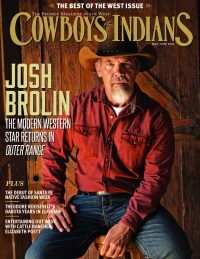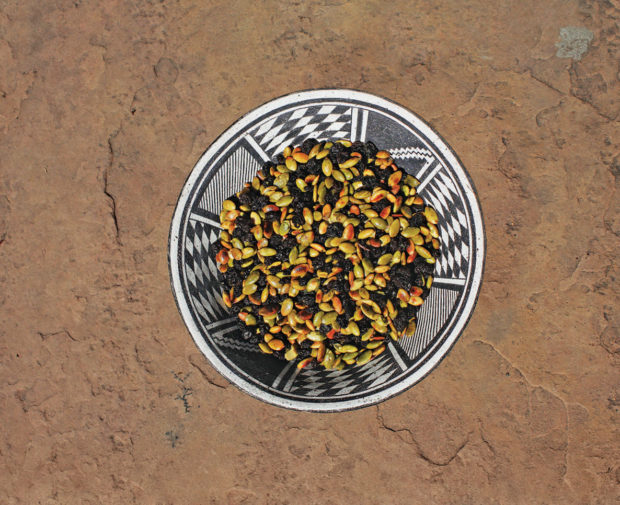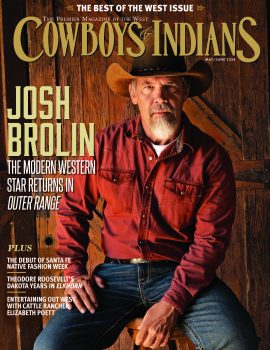Native artist Roxanne Swentzell embarked on a mission to improve her community’s health through pre-colonial foods.
In a small adobe structure the size of a storage shed, next to her adobe on Santa Clara Pueblo, 27 miles north of Santa Fe, renowned bronze and clay sculptor Roxanne Swentzell keeps dozens of old jam jars filled with seeds from past crops grown on her scant of an acre garden, neatly lined up and labeled on wooden shelves that she built herself. Saving seeds isn’t that unusual — it’s how anyone who farms can replicate what they grew one year to the next — but Swentzell’s seeds are uncommon. They are from corn, squash, beans, and other staples of the Pueblo diet that were grown in northern New Mexico before the arrival of the Spanish, who brought their own foods.
The introduction of that foreign diet, Swentzell learned, was the beginning of the downfall of the Pueblo people, who, like other Native Americans, have some of the highest rates of diabetes across the global population.
Her cookbook, The Pueblo Food Experience Cookbook: Whole Food of Our Ancestors (Museum of New Mexico Press, 2016), is a collection of recipes and stories about how a trial experiment to eat ancestral foods became a solution to many of the chronic health problems her people face today.
C&I talked with Swentzell about the genesis of the Pueblo food experience, the challenges involved, and its outcomes.
Cowboys & Indians: Four years ago, you initiated the first trial of the Pueblo Food Experience. You found a group of Native Americans whose ancestors had lived in northern New Mexico for more than 20 generations, and they agreed to eat only ancestral foods for three months. What had their diet consisted of previously?
Roxanne Swentzell: A typical American diet: processed food, wheat, sugar, dairy, things like that.
C&I: How did the pre-experiment diet affect your health and the health of others in the tribe?
Swentzell: Health conditions were bad. They were worse than in any other group because we’re least-adapted to these foreign foods. We’re living in our homeland and eating as if we’re on Mars. It takes a whole different body type to genetically process milk, dairy products, wheat. All these things are new to our bodies. It’s a struggle. Our bodies are constantly trying to adapt. It’s inflammation, always.
C&I: How did you connect the dots between the food and the health of your people?
Swentzell: Saving seeds was the link for me in fitting foods with people, genetically. Plants are adapted to location — the environment. So are people. You cannot grow our corn well in other climates because it’s adapted to this environment. People’s DNA adapts to a location they’ve lived in for more than 20 generations. This is why we get all the different races of people. So I thought, What if we ate our traditional foods? Would that help us? The whole experience was to get volunteers to agree to eat this way, volunteers from the tribe, with a range of eating and health issues.
C&I: Tell us about that first group of volunteers and what some of their health problems were.
Swentzell: The first group ranged from age 6 to 65 years old. We had people with diabetes, who were overweight, had been diagnosed with heart disease, autoimmune disorders, inflammation, allergies, high cholesterol, and a lot of depression. We had 14 people [in the first group]. I was personally dealing with high cholesterol and had gone to many doctors. They’d put me on different diets, and after years of this, they wrote me off. They said I was genetically predisposed to have high cholesterol and there was nothing I could do about it.
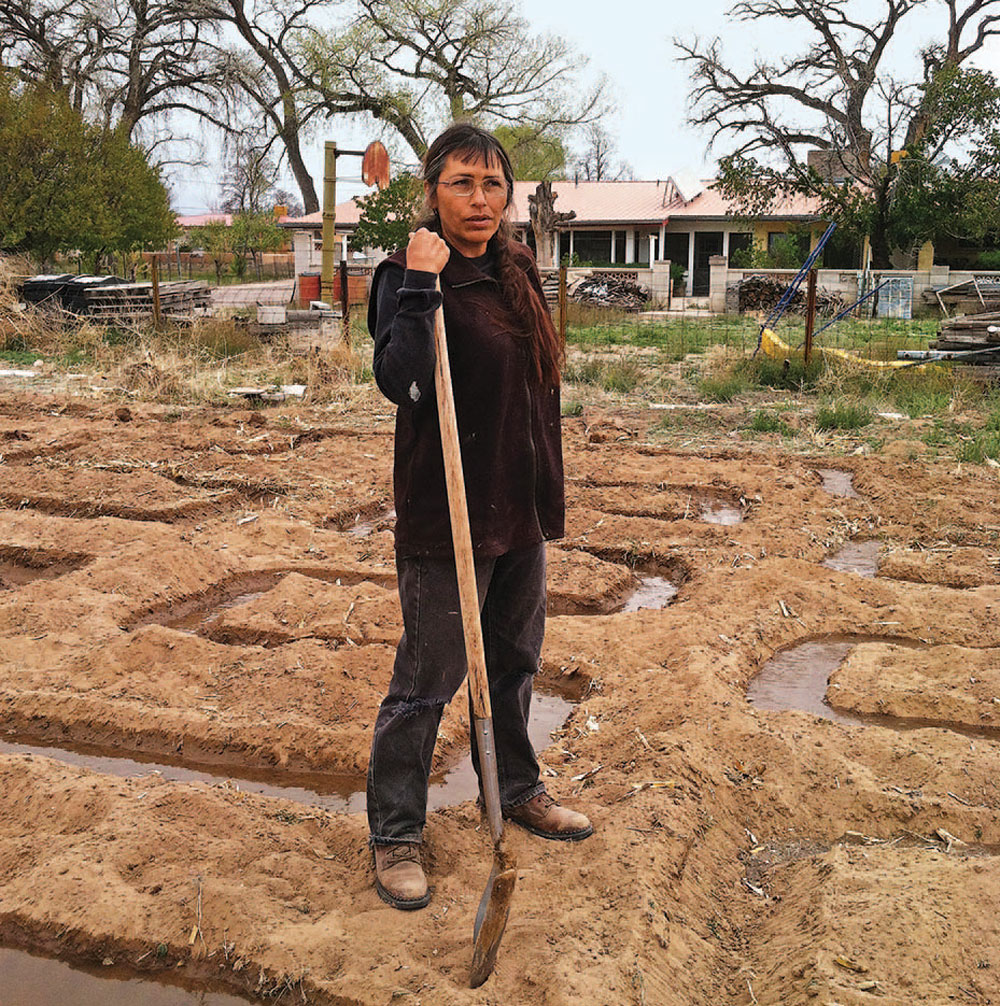
C&I: What did your new — yet very old — diet consist of?
Swentzell: Anything that was edible before contact with Europeans. The late 16th century is when the Spanish came to our area. We were hunters, gatherers, and farmers. Hunting all of the different animals that were here at that time. Big game was buffalo, elk, deer, bighorn sheep, antelope. Smaller game meant fish, birds, and even rodents; the pack rats and rabbits, squirrels, stuff like that. Plus all of the wild plants you collect: teas, onions, strawberries, blueberries, blackberries, raspberries, currants, roots, mushrooms, plums, and cactus fruits.
C&I: Not ingredients you’d find at a regular grocery store — and hard to source in March, which is when you began the experiment. How did you and the others in your community manage?
Swentzell: I sent everyone home with a package of ingredients to start off with — some beans, squash, and corn masa [dough] to make different things with. We were used to eating white flour and needed to switch over to use corn flour. Piñon, spices, and salt were also included.
C&I: What was the biggest challenge you and the others faced while learning to eat this way?
Swentzell: We had to relearn how to eat from scratch, and we had to get creative because you don’t want to eat beans every day. We’re used to eating a variety of things. We wanted salad dressing, but there was no salad dressing. We figured out how to make salad dressing from boiling down currants or plums into a watery paste, and you can pour that on or crush piñon nuts and have a nice addition.
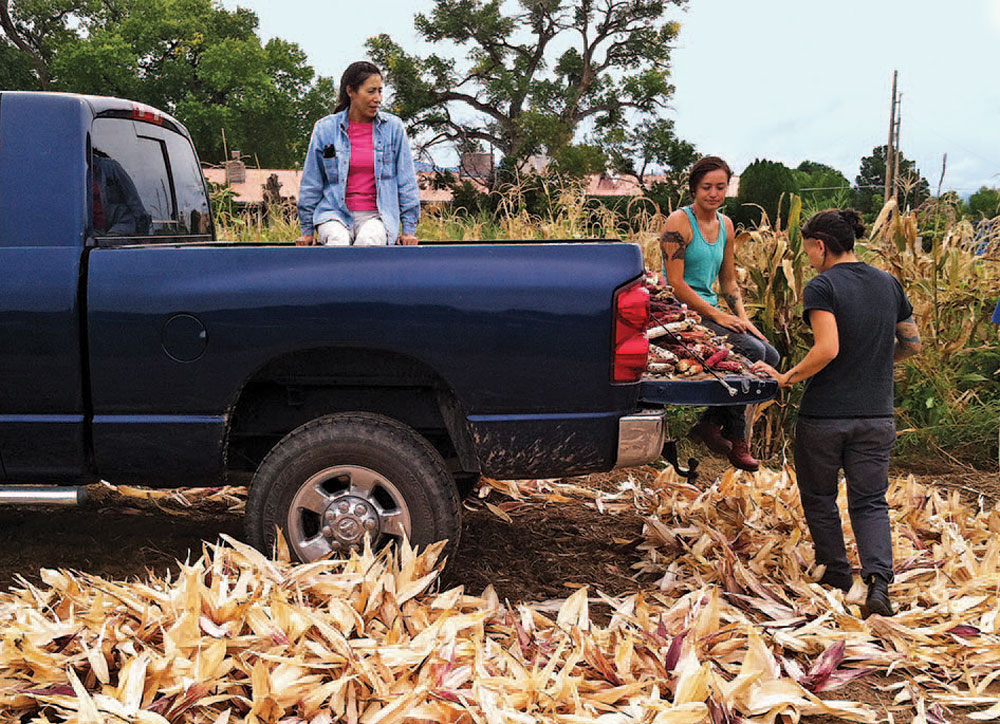
C&I: Can you give us an example of what you’d typically eat?
Swentzell: A day might look like this: Instead of coffee, you boil down cacao chips into a nice drink; you could reuse that for several days. Then you boil some water to make atole, a thick corn drink, and that would be your breakfast unless you wanted to add a turkey or duck egg.
C&I: How’d you cook the egg without oil?
Swentzell: You would boil it or fry it in water. It’s like a fried egg, but with water. Same with popcorn. You don’t need the oil. If you put it in the pan and keep moving it, it won’t stick.
C&I: What did you eat the rest of the day?
Swentzell: I tend to be busy, so if lunch was on the road, this is where my snack stuff would come in. There’s a wonderful trail mix with piñons, pumpkin seeds, and currants, and you could take along tamales. Tamales are an endless creative process. You can make anything into a tamal. We would put meat or trail mix in them or add piñons to them for protein.
C&I: It’s a really basic diet, but it also seems like it might be hard to source.
Swentzell: You can find squash in stores, so that’s helpful. I had to find bulk cornmeal in Oregon. And if we didn’t have a hunter in the family to get the wild game, we’d find elk and bison at Whole Foods Markets and organic stores. As a group, we decided to go in and get a whole bison. That bison ended up feeding all of us for a whole year. It brought the community together.
Our only problem was finding non-GMO corn. To get enough for the group, I had to bulk order some from Oregon. We have the blue, red, white, and yellow varieties. The blue corn is one of the — knock on wood — few things they’ve not GMO’d. We ate a lot of corn and we still lost weight. Even though corn turns to sugar, it was somehow fitting our body types well, so it wasn’t causing an insulin spike.
C&I: What were the results of eating traditional foods for 90 days?
Swentzell: After three months, we all went back to the doctor and got checked, weighed, and prodded, and had blood tests. It was incredible. The doctors were blown away. To help someone from diabetes or heart disease or an issue like mine, the cholesterol problem, in three months to have it level-lined good, it was phenomenal.
C&I: How did you go from the experiment within the Pueblo community to a published cookbook?
Swentzell: When people in the community said, “What do you eat?” I thought we’d better put some recipes together and show them how to cook and eat this way, too.
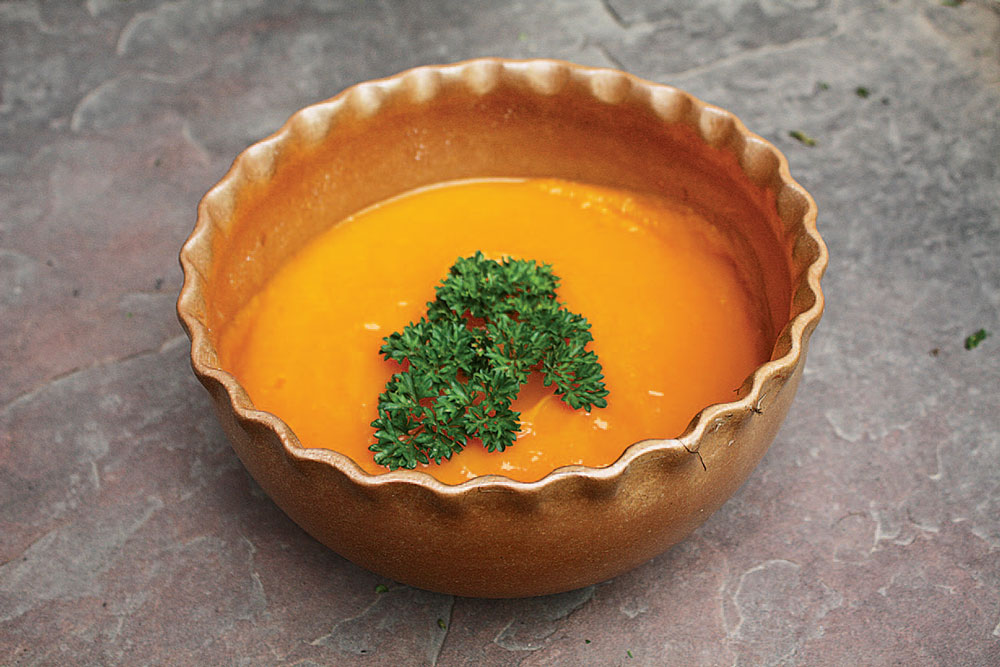
C&I: Many of the recipes — like the dried bean snack, which is literally just beans, first cooked, then slowly dried in a low oven — are simple, with little or no added spice. Others, such as jack rabbit stew, are also straightforward but take two hours to cook — assuming you don’t have to go hunt a jack rabbit first. How do you make this idea of ancestral eating more accessible and achievable for others?
Swentzell: The next step is growing more of this food for our community, and we’ve started the second phase of the cooking house. We cooked on stones. We’re putting our kitchen stones back together and teaching young women in the tribe to cook in the old ways. I’m going way back, [when] we had these flat cooking stones, built a fire underneath, and you had grinding stones, where you would grind the grains. This is hardcore, but it feels good. That is the point. If you grind that corn with a rock in your hand, it’s a whole different tamal than if you bought it at Whole Foods Market.
C&I: While it is certainly about changing an individual’s diet, the experiment is about so much more than that, right?
Swentzell: Native Americans have struggled a lot for our homeland. We can’t overrun the government. We can’t go back, but we can take these things forward with us. It’s like a revolution — it’s taking our power back. It’s not violent. It’s loving ourselves. We’re going to bring back our food and take care of ourselves, one corn at a time.
The Pueblo Food Experience Cookbook: Whole Food of Our Ancestors edited by Roxanne Swentzell and Patricia M. Perea (Museum of New Mexico Press, 2016) is available on Amazon.com.
From the April 2017 issue.



